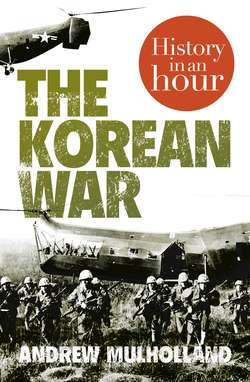Читать книгу The Korean War: History in an Hour - Andrew Mulholland - Страница 5
Background Geography
ОглавлениеThe Korean peninsula has been described as a ‘natural state’, geographically self-contained and with a culture entirely different to that of its neighbours. It is roughly 400 miles north to south, and 120 miles across at its narrowest. It is mostly rugged terrain, with the Taebaek mountain chain running down its centre making east–west communications difficult. The northern border with Manchuria (part of China) is defined by two rivers, the Yalu to the west and the Tumen to the east. The Primorsky Krai region of eastern Russia shares a thirty-mile border with Korea’s northeast corner as well. The important Russian port of Vladivostok is some 100 miles further to the northeast. Japan lies only 100 miles off the southeast coast. These three powerful neighbours have jockeyed for influence in the region for hundreds of years. To a degree, Korea has been caught in the middle of this rivalry.
The climate may best be described as hostile. The summers are hot and dry, the winters terribly cold. Between the two, spring rains can turn much of the landscape to mud.
In 1950, transport links were primitive, with very few roads or railways and only two major ports. These were at Pusan on the southeast tip and Inchon, serving the capital city of Seoul, midway up the west coast. They would become crucial during the war.
The Taebaek Mountains (Image by G43)
